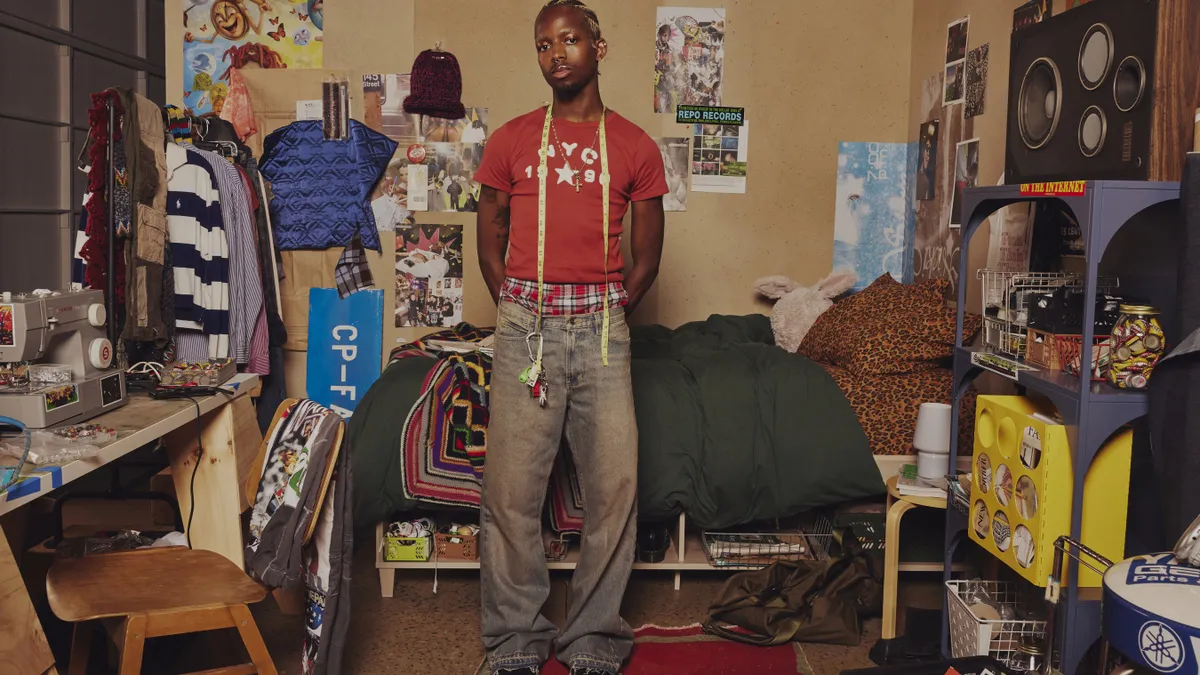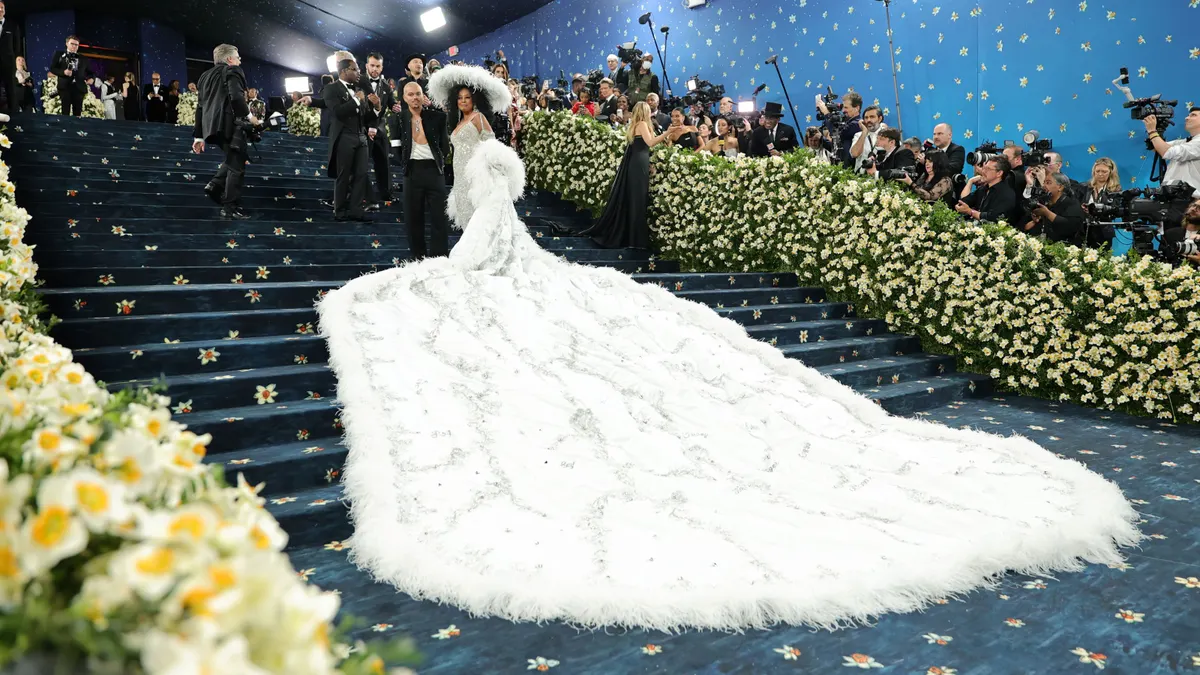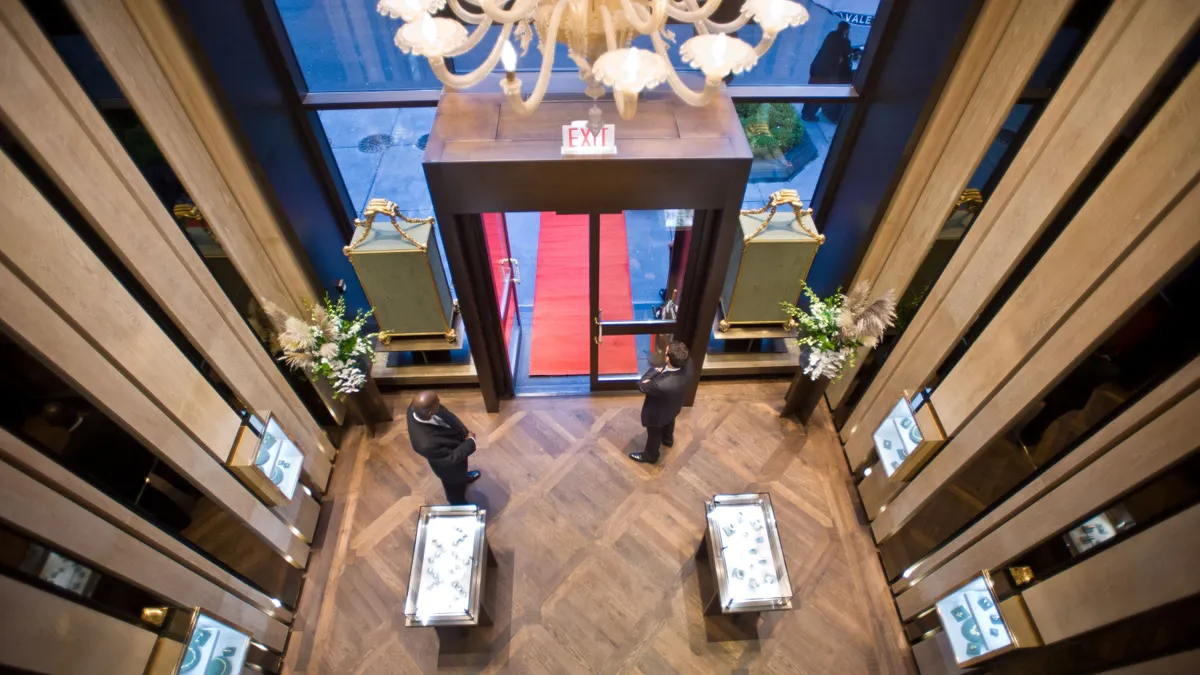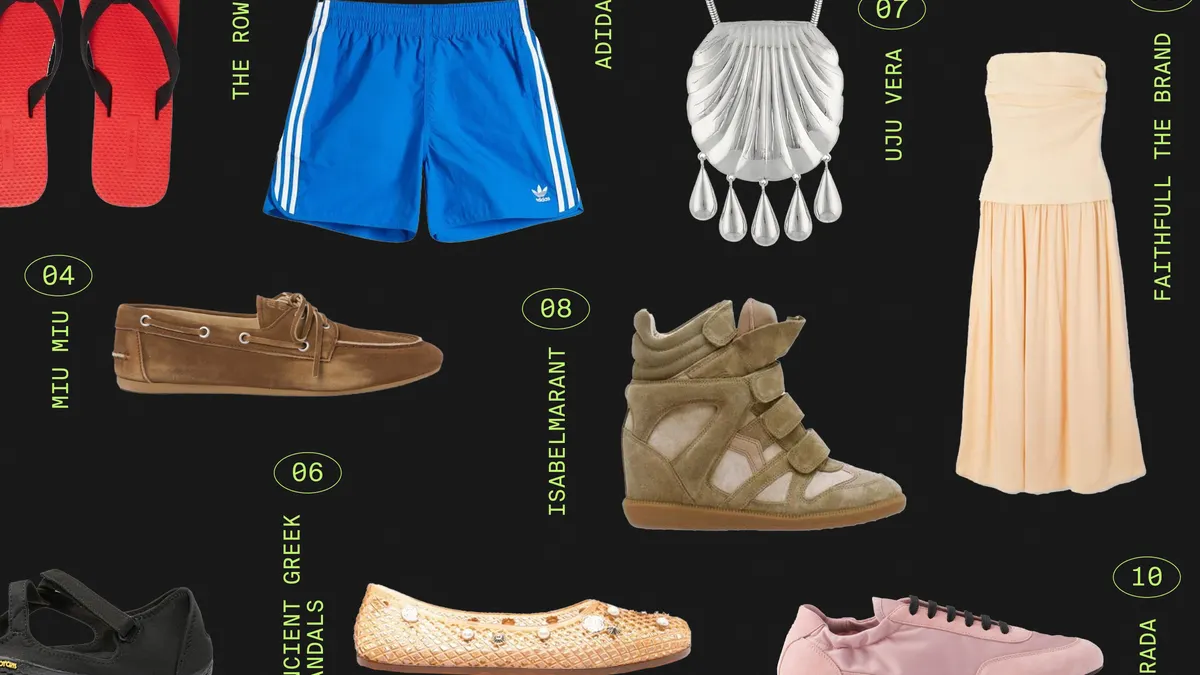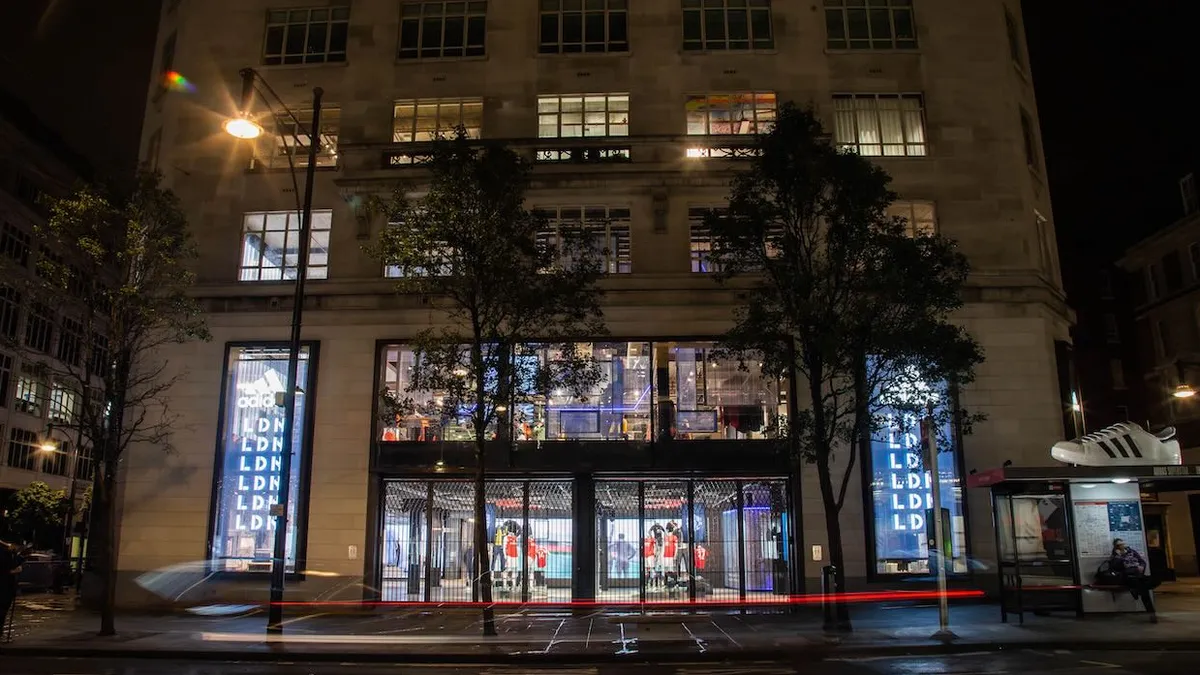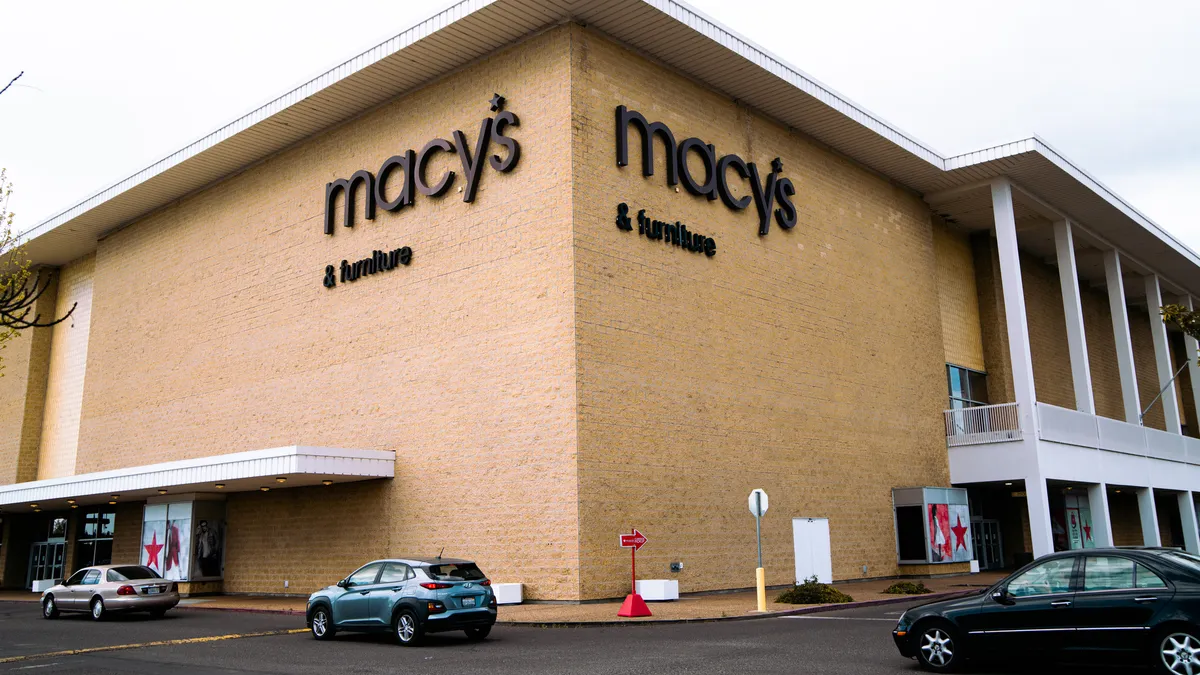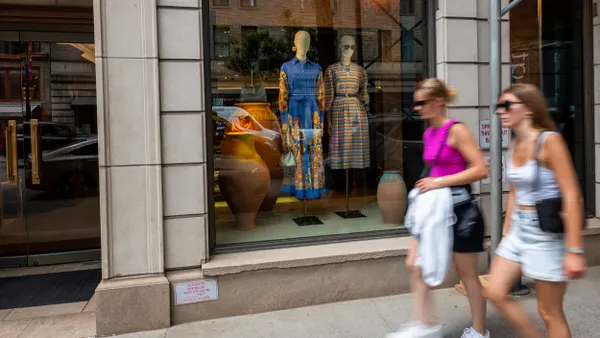This year’s back-to-school season is shaping up to hit marketers with yet another dose of turbulence, requiring fresh energy to capture what is expected to be more limited consumer spending. A focus on engaging younger generations could be what makes the difference between sink or swim.
Spending this season is expected to fall slightly versus 2023 levels, and brands accordingly have pulled out all the stops in hopes of coming out on top during a critical sales period. For retailers such as Amazon and JCPenney, that has meant doubling down on value. For others, including American Eagle and Urban Outfitters, it has meant marketing to Gen Z and other young cohorts to deliver a sense of relatability and inclusive advertising.
“What we’ve seen with Gen Z, Gen Alpha is that the strong influence at the very start of the journey leads to twice as many parents considering a brand,” said Krithika Rosenthal, group director of strategy for GroupM’s Wavemaker U.S. agency. “That’s why it’s important not just to influence the parents, it’s also important to think about how we connect with the kids.”
Among parent back-to-school shoppers, 61% agree that their children influence them to spend more, according to Deloitte’s annual survey of the occasion. Keeping the whole family in mind may be what allows marketers to thrive amid another tough season, which is forecast to see spending decline from $31.9 billion in 2023 to $31.3 billion. While the drop is smaller than last season’s, financial concerns endure, with low and middle-income families expected to spend 4% and 9% less, respectively.
“That low- and middle-income group is really being squeezed by the cost of living prices that are going on,” said Lupine Skelly, retail research leader for Deloitte. “Those families are saying that they’re having to spend more on their groceries and childcare, so when it comes to back to school they’re forced to have to make some cuts in other areas to even spend at this level.”
This back-to-school season carries with it challenges beyond engaging the younger generation, whether it’s striking the right balance of value and emotion in messaging or reaching consumers across a wider swath of channels being shopped. Still, it’s not all doom and gloom — the period is also packed with opportunity, including a prime chance to grow loyalty.
‘The new normal’
Parents this season expect to spend $586 per child on back-to-school items, down just $11 from 2023 averages, per Deloitte. Spending on clothing and school supplies are expected to remain flat while tech spending is expected to fall 11%, mirroring broader trends. As a focus on economizing endures, value will remain key for marketers to thrive in a season marked by “cautious and careful spending,” Skelly said. At this point, consumers may expect nothing less.
“I think ‘the new normal’ is a great term for these sorts of big shopping events,” Skelly said. “These retailers have pretty much trained consumers to look for deals and these promotional events and people are really loading up their carts and waiting for those discounts to show up before they make purchases.”
In the search for deals, back-to-school buying has started earlier, with 59% of shoppers believing that the best deals occur at the start of the season. Roughly two-thirds of parents’ planned budgets were forecast to be spent by the end of July, up from 59% in 2023 and 14 percentage points from two years ago, Skelly said. Sales extravaganzas like Amazon Prime Day have also grown in favor, with 48% of shoppers shopping the e-commerce giant’s sales event last month for back-to-school items, a nearly 10% increase from the year prior.
Amazon has cemented its focus on value beyond its latest Prime Day event, which saw record-breaking sales, with the recent launch of its back-to-school campaign. The effort centers on a 30-second ad starring actress Michelle Buteau, who encourages parents to “spend less on your little freeloaders” with Amazon’s Back to School shopping guide. The comedic messaging is similar to that of its past back-to-school campaigns that featured actors including Randall Park and Kathryn Hahn.
“In recent years, we’ve seen customers continuing to feel financial pressures and looking for comedic relief amid the relentless news cycle, which is why our campaign focus has stayed consistent,” said Jo Shoesmith, Amazon’s global chief creative officer, in emailed comments.
Striking a chord
Deeper emotional appeals have been at the heart of marketing strategies for other brands this season. Among them is Instacart, which launched its back-to-school campaign with two ads meant to remind parents that moments with their children are what matters most amid the hectic back-to-school shuffle.
A focus on both value and emotion could be critical to marketers for driving an authentic connection, particularly with multicultural audiences, explained Wavemaker’s Rosenthal. Notably, co-viewing has grown prominent between younger cohorts and their parents. Accordingly, marketing to Gen Z and younger generations — who are also known for prioritizing diversity — and their parents through a multicultural lens is key.
“We know that [Gen Alpha is] the most diverse generation ever, so the parents are also diverse in that sense,” Rosenthal said. “Yes, emotions are important, but also tailoring to those different multicultural audiences becomes even more important because kids are influencing their parents a lot more now in terms of shopping.”
For instance, Hispanic parents value nostalgia and word-of-mouth, while Asian parents are driven by the notion of reputation, per Wavemaker research conducted in March. A focus on more immersive experiences could also help attract the younger demographic, Rosenthal added.
Urban Outfitters, in its efforts to strike a chord with the younger generation, recently unveiled a “Shift Happens” campaign that nods to the changes the younger generation experiences around events like going back to school. The effort has a presence across multiple channels, including a partnership with Pinterest and several influencers, each of whom created their own boards that were brought to life at an in-person event.
“This is where there’s a window of opportunity to do something before the craziness at the end of the year that will affect markets.”

Stanlei Bellan
Chief Strategy Officer, Juice Media
A similar approach is at the core of American Eagle’s new “Live Your Life” brand platform and fall campaign. “Live Your Life,” a 20-year-old slogan for the retailer, is meant to promote self-expression and acceptance. The accompanying campaign includes a slew of activations meant to connect with the brand’s target Gen Z audience, including a tie-up with Life on Film and over 200 people to capture disposable camera footage showcasing how they live their lives.
Elements such as the Life on Film partnership are more candid than what American Eagle typically puts forward in its back-to-school marketing, CMO Craig Brommers explained to Marketing Dive in a July interview. This approach could help it stand out during the make-or-break sales period, and while reports such as Deloitte’s present a less optimistic spending forecast, other forecasts have painted a sunnier outlook.
“One thing that has been resilient over the years is that parents will, in fact, help their kids and put them first, so I think we’re optimistic for this back-to-school season,” said Brommers.
Finding bright spots
Advertiser behavior could mirror that of consumers this season, said Juice Media Chief Strategy Officer Stanlei Bellan, who expects spend to be “flat and down” from last year. While overall spending may trend lower, two major events — the Olympics and November election — could lead to bursts of activity as marketers try to avoid broader cultural noise.
“This is where there’s a window of opportunity to do something before the craziness at the end of the year that will affect markets,” Bellan said of the back-to-school period.
The election could heighten concerns about the economy and lead to more cautious spending, explained Devon Schorr, a strategy director for agency Movers+Shakers, in emailed comments. Accordingly, marketers who emphasize value and discounts in their marketing over what is trending will “likely see more success this season,” the exec said.
“The one thing that I have learned is that we have to be flexible and nimble and ready to react to the tone of the time."

Craig Brommers
CMO, American Eagle
Marketing this season is not without bright spots. Parents are prioritizing value over loyalty, with 67% reporting that they will shift brands if their preferred brand is expensive, per Deloitte. Accordingly, the season could present an opportunity for marketers to grow their loyalty programs, so long as they offer valuable incentives, Skelly said. Loyal back-to-school shoppers spend 35% more, according to separate Deloitte research.
Loyalty has been a key focus by retailers such as JCPenney and Target, which are both using members-only experiences around value as a way to attract and retain interest.
Meeting where they are
Beyond messaging, marketers must also juggle meeting consumers in the right place. Shoppers this season have indicated that they plan to shop more retail formats to find the best deals this season, per Deloitte, while 70% are multichannel shoppers. In an effort to better understand target consumers’ behaviors, Wavemaker’s Rosenthal expects retail media to see a boost in investment this season, mirroring broader trends around the channel’s growth.
“[Marketers] need to not keep focusing the spend only on retailer promotions but rather use retailers as a way to drive other media more effectively,” Rosenthal said.
Among channels consumers will shop, 33% plan to leverage social media, up from 21% the year prior. Twelve percent plan to use social to purchase while shopping for back-to-school products, up from 6% in 2023. The top destinations for consumers to shop are mass merchants (77%) and online retailers (65%), formats appealing for both their price and convenience.
Seventy percent of consumers plan to shop both in-store and online, up 4% from 2023. While in-store experiences were neglected during the pandemic, Skelly sees this season as an opportunity for retailers to boost such experiences. Consumers also report that they are more loyal to retailers when they have consistent experiences online and in-store, Skelly said.
Pacsun is among those prioritizing in-store. The retailer this month launched its “Better in Baggy” fall campaign through a Pinterest partnership that included QR codes on store windows to encourage consumers to shop its seasonal Pinterest board. American Eagle’s fall campaign also features a major in-person push, including custom videos projected on its stores that will invite customers to “be a part of the campaign.”
While messaging, tone and media mix are all vital parts of marketing strategies this season, having the right mentality could be the secret to success. Uncertainty will be a throughline this season and beyond, and has taught American Eagle’s Brommers to be willing to adjust to ensure the retailer navigates unexpected moments effectively.
“The one thing that I have learned is that we have to be flexible and nimble and ready to react to the tone of the time,” Brommers said. “And we will be over the course of the next couple of months.”



